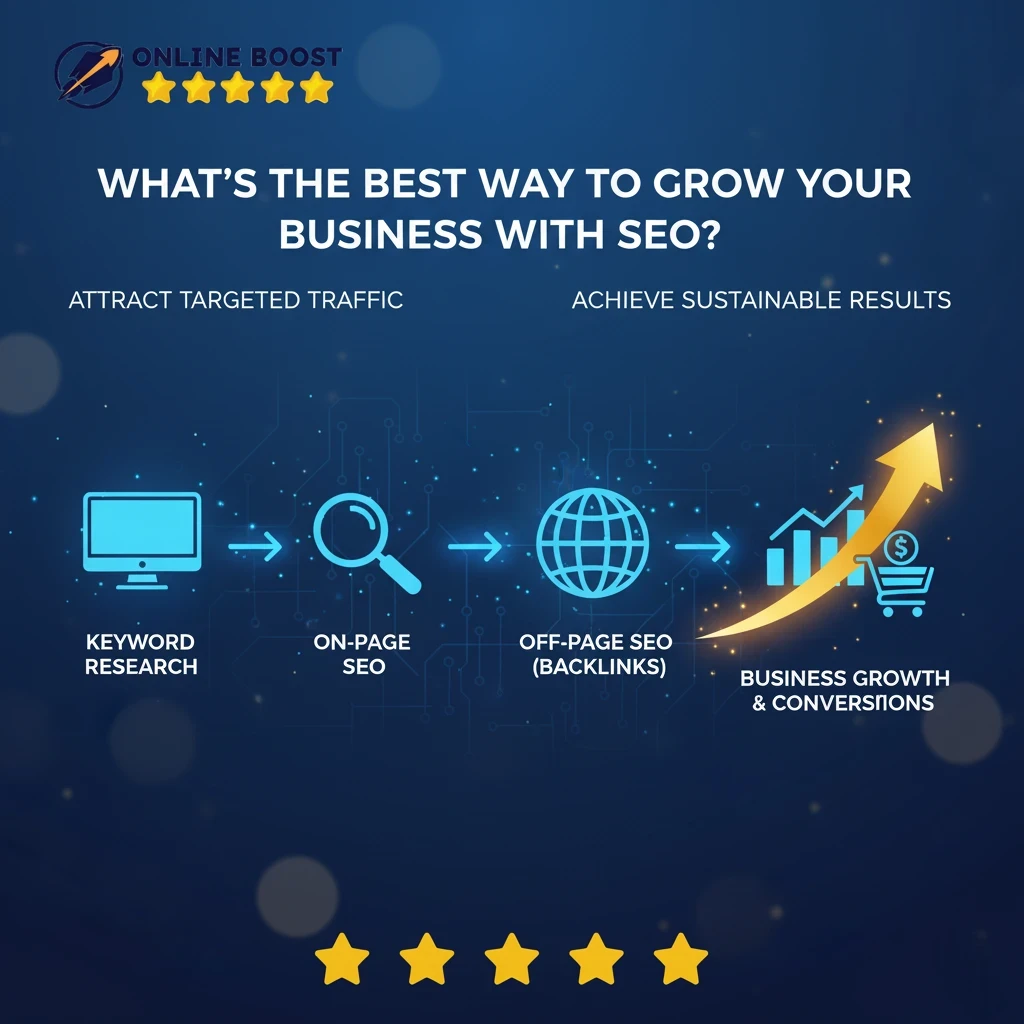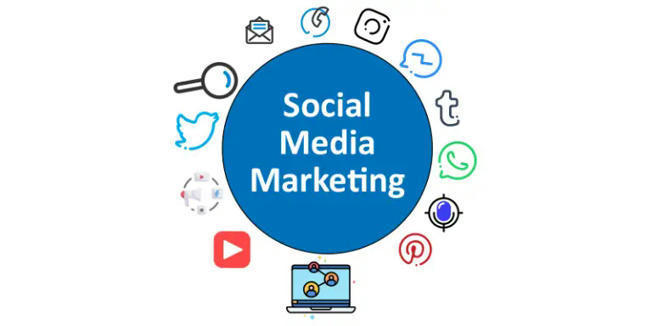In today’s world, it’s not enough for a business to simply exist online it has to stand out. Every business wants to be seen, trusted and chosen by customers. And that’s where SEO or Search Engine Optimization, makes all the difference. It’s not a buzzword anymore it’s a real, measurable strategy that helps businesses grow, attract new customers and build long-term credibility.
So, what’s the best way to grow a business using SEO? It starts with understanding how search engines connect people to solutions and how you can position your business to be the one they find first.
SEO: The Modern Growth Engine for Businesses
Recent studies show that 68% of online experiences begin with a search engine, and 53% of all website traffic comes from organic search. These numbers make one thing clear SEO isn’t optional. It’s one of the most powerful digital marketing strategies available today.
When people search online, they’re usually ready to take action whether it’s buying a product, booking a service or visiting a local store. SEO ensures that your business appears when that intent is at its highest.
And here’s the reality: 75% of users never scroll past the first page of Google. That means if your website isn’t ranking near the top, you’re invisible to most of your potential audience. Businesses that invest in SEO don’t just attract more visitors they attract better visitors: people who are already interested in what they offer.
Step 1: Build a Strong and Optimized Website
Every successful SEO journey begins with a solid website. Think of your website as the foundation of your digital home if it’s weak, everything else crumbles.
A good website needs to be fast, mobile-responsive and user-friendly. Studies show that a one-second delay in page load time can reduce conversions by 7%, and 53% of visitors abandon a site that takes longer than three seconds to load. That’s how crucial performance is.
A mobile-friendly design is equally important. With over 70% of web traffic now coming from smartphones, search engines prioritize mobile-optimized sites. Google’s algorithms look closely at user experience, so if visitors can’t navigate your site easily, your rankings will suffer.
An optimized site should also have clear structure logical categories, keyword-rich headings and well-written meta descriptions. These small details help search engines understand what your pages are about and display them for the right search terms.
Step 2: Mastering Keyword Research and Intent
At the core of SEO lies keyword strategy. But modern SEO isn’t just about picking random keywords it’s about understanding intent.
People search differently now. Instead of typing short phrases, they use conversational queries like, best digital marketing agency for small business. When a business understands this search intent, it can create content that directly answers those needs.
For example, instead of forcing keywords like best marketing company into every sentence, content should flow naturally. The goal is to write for humans first and search engines second. That’s how trust and engagement build over time.
Smart keyword targeting can bring massive traffic growth. HubSpot reports that businesses that actively use SEO-focused blogs receive 55% more website visitors than those that don’t. The more relevant your content, the more Google rewards you with visibility.
Step 3: Strengthen Trust with Reviews and Reputation
One area that many businesses overlook is online reputation yet it’s one of the most influential ranking factors, especially for local SEO.
A survey by BrightLocal found that 88% of consumers trust online reviews as much as personal recommendations, and 94% say positive reviews make them more likely to use a business. These numbers show just how critical social proof has become.
To strengthen credibility, businesses often rely on authentic feedback from customers. Some even choose to buy reviews online from legitimate sources to build an initial reputation boost — especially new businesses that don’t have many reviews yet.
Trusted providers like Online Boost specialize in helping businesses gather genuine, verified reviews across platforms like Google, Trustpilot, Yelp and others. These reviews not only build customer confidence but also improve click-through rates, which Google interprets as a sign of trustworthiness.
In short, the more positive engagement your brand receives, the more likely it is to rank higher and attract organic traffic.
Step 4: Create Valuable and Engaging Content
Content is the fuel that keeps SEO running. Search engines reward content that helps people solve problems or make informed decisions.
The most effective SEO content is written with purpose. It answers questions, shares expert insight and offers real value. Businesses that post relevant blogs or guides at least twice a month generate up to 67% more leads than those that don’t.
Educational content also keeps visitors on your page longer, reducing bounce rates and increasing trust. Think of tutorials, how-to guides and detailed comparisons. These types of articles position your brand as an expert in your field.
And it’s not just about blog posts videos, infographics and case studies work too. The goal is to create a mix of content formats that keep users engaged while signaling authority to search engines.
Step 5: Focus on Local SEO
For businesses with physical locations, Local SEO is one of the most powerful growth strategies. Nearly 46% of all Google searches are local in nature, such as best coffee shop near me or plumber in Dallas.
To rank locally, you need to claim and optimize your Google Business Profile. Keep your business information name, address and phone number consistent across all directories. Add photos, respond to reviews and post updates regularly.
When a potential customer searches nearby, your optimized profile, along with a strong set of reviews helps you appear at the top of local map results. It’s simple but incredibly effective for attracting walk-in customers and calls.
That’s why services like Online Boost are valuable by helping businesses buy reviews online safely and ethically, they improve visibility and reputation at the same time.
Step 6: Track, Analyze, and Improve Constantly
SEO isn’t a one-time project it’s an ongoing process of testing and improving. Regular tracking helps you see what’s working and where you need to adjust.
Using tools like Google Analytics, Search Console and SEMrush, you can measure organic traffic, keyword performance and conversion rates. Even small changes updating an old article, improving internal linking or refreshing meta tags can lead to measurable gains in rankings.
The best SEO strategies evolve over time. The businesses that win are the ones that stay consistent, adapt quickly and continue creating value for their audience.
The Bottom Line: Smart SEO Creates Sustainable Growth
The best way to grow a business with SEO isn’t through shortcuts or tricks. It’s through smart, consistent work that focuses on value, trust and authenticity.
SEO helps businesses attract the right customers instead of chasing them. It builds authority, drives visibility and creates long-term stability. And when it’s paired with reputation-building strategies — like gathering genuine reviews through trusted providers such as Online Boost — the results multiply.
When businesses choose to buy reviews online from credible sources, they give their SEO efforts a head start by building the social proof Google and customers look for. Combined with optimized content and a strong web presence, this approach turns online visibility into real business growth.
SEO is not just about ranking higher; it’s about being recognized, respected and remembered. The businesses that master it are the ones that grow not just in traffic and leads, but in trust and customer loyalty.


